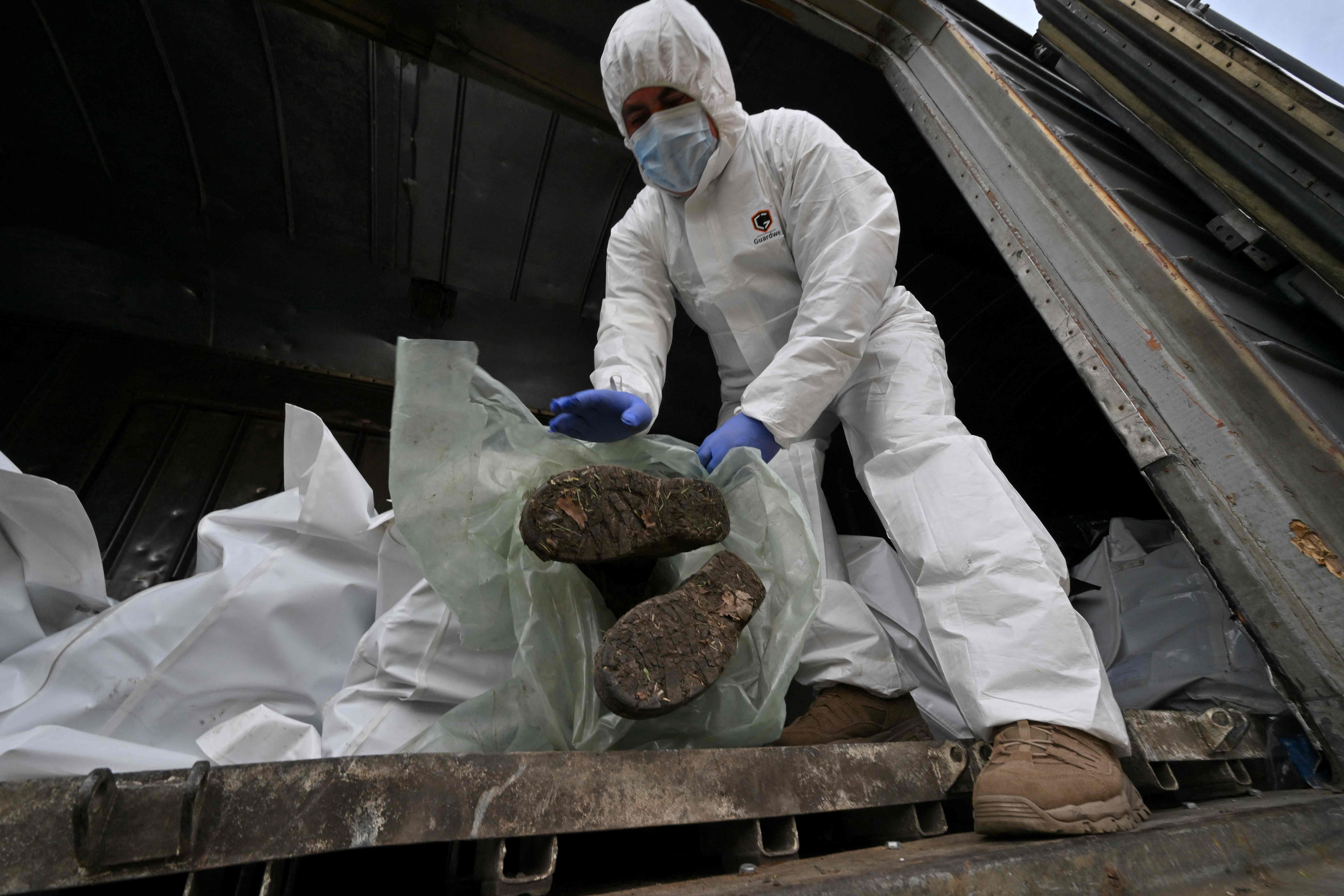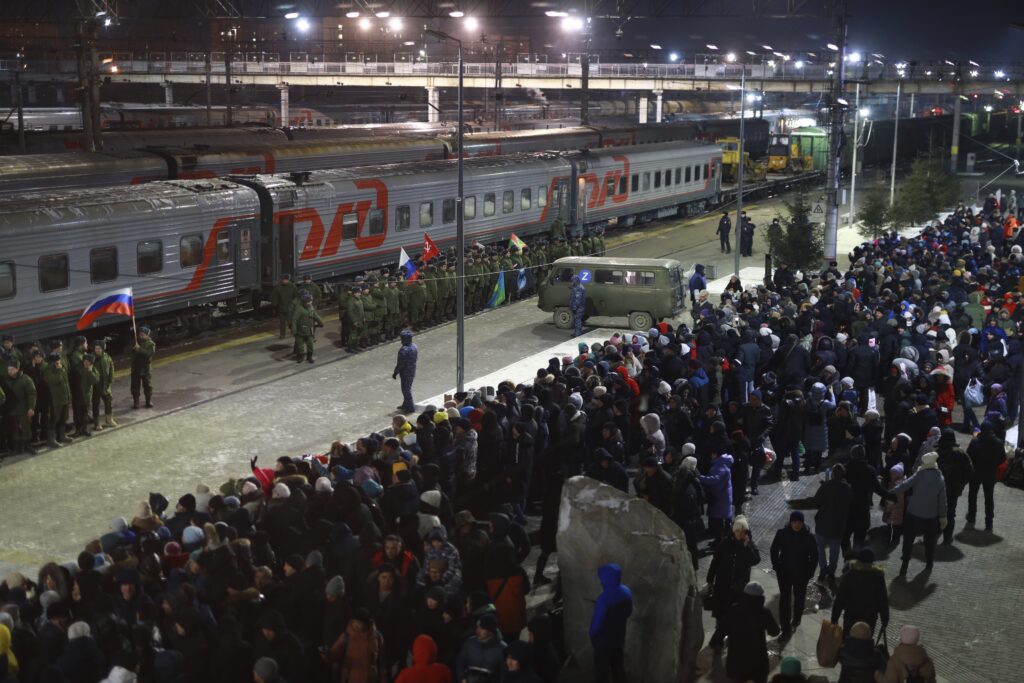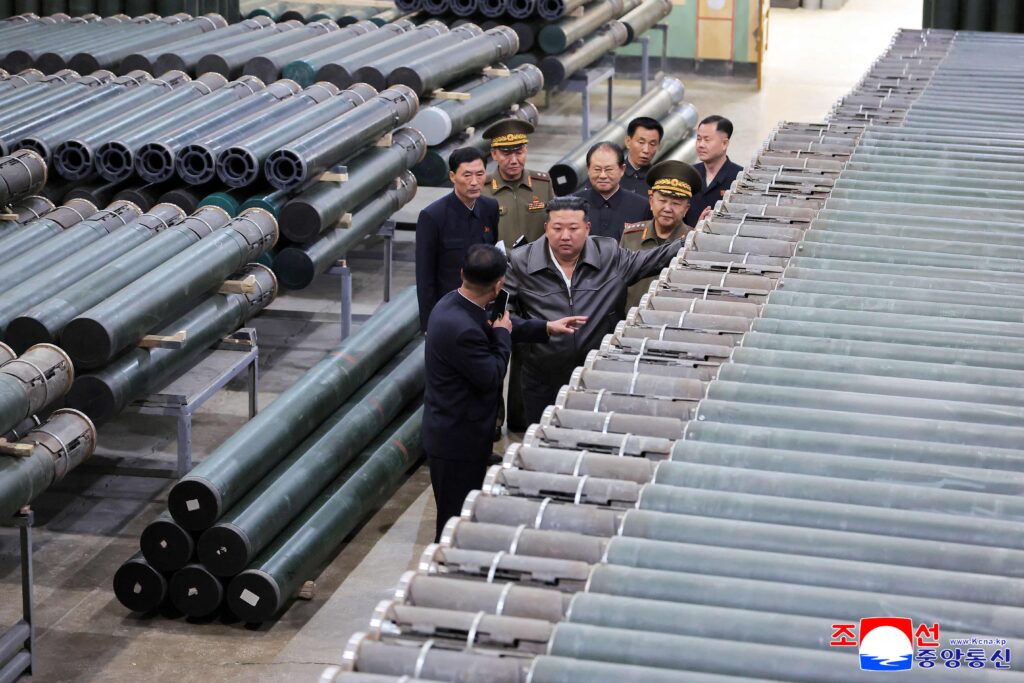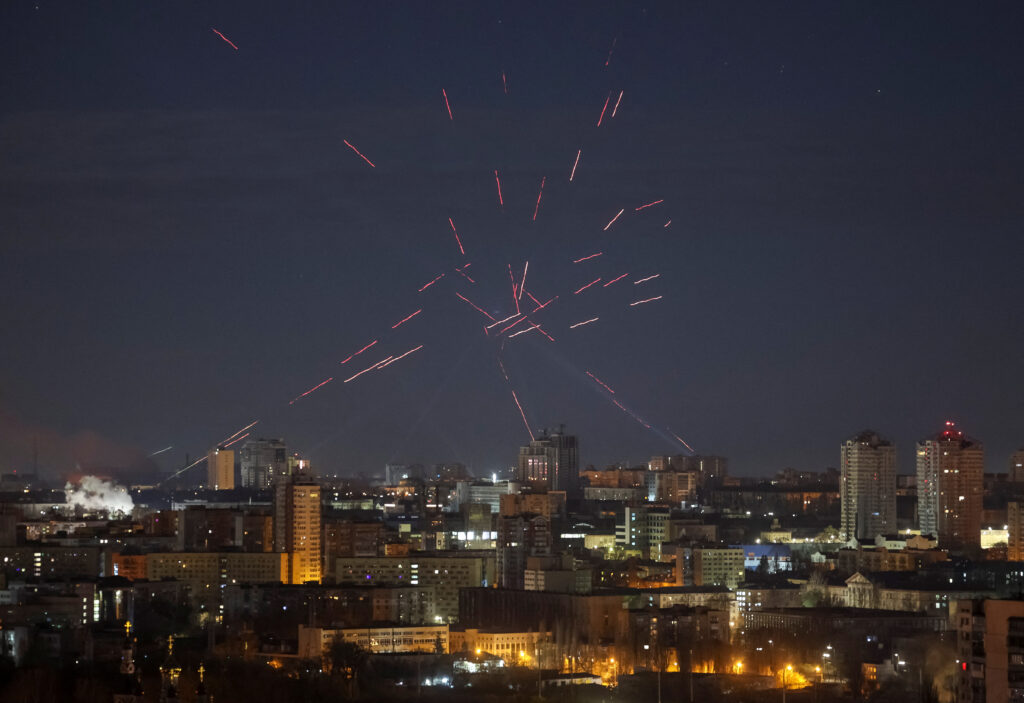«At first, [the Russian government] refused [to take the dead bodies of Russian soldiers], then it was something else. Then they offered us some bags… Listen, even when a dog or a cat dies, we don’t treat it that way. They’re essentially like… they’re basically trash bags». In an exclusive interview with Meduza, Volodymyr Zelenskyy expounded on one of the more controversial and distressing aspects of the Russo-Ukrainian War — the treatment of dead Russian soldiers. His framing of the issue shows one part of the problem: the Russian government has not been proactive in collecting the bodies of their dead, leaving hundreds of dead bodies in Ukraine and Belarus.
In turn, the Ukrainian government has taken it upon itself to identify the dead, sometimes using facial recognition software in a bid to notify their next of kin in Russia. However, when it comes to the treatment of the dead, morality is not so straightforward; it is key to keep in mind that even existing legal frameworks and rights for the dead might not provide what some would consider respectful treatment of the dead. This is especially true with the advent of new technology in the 21st century. Here, we explore what is happening with dead Russian soldiers in Ukraine and the kind of legal and moral questions they raise.
International Law and Dead Bodies
When it comes to international law, there are several rights enshrined within the Geneva Convention and further amendments to it. The Geneva Convention, as a part of the international humanitarian law (IHL) that aims to limit the effects of armed conflict, dictates that the dead should not be maltreated (Rule 113), calls both parties to cooperate for the identification and return of the remains of soldiers (Rule 114), and ensures that the dead are honorably interred (Rule 115). On the other hand, according to Russian domestic law, the Ministry of Defense of the Russian Federation is responsible for burial services. The existing legal frameworks show us that there is no doubt that Russian policy regarding the dead violates both international and domestic law.
Rule 114 suggests that «the power controlling the territory» is responsible for identifying and returning the remains. Therefore, it seems as though Ukraine complies with the IHL. However, this war shows us that the existing legal frameworks are not always the answer to moral problems. For example, with the use of facial recognition technology provided by Clearview, Ukrainian officials have contacted the families of the deceased soldiers, attaching an image of the dead body.
Moreover, also seemingly according to Rule 114, the Ukrainian government is attempting to notify the next of kin through the establishment of a website and Telegram Channel, Ищи своих (Look for Your Own). Here, instead of sending photos unsolicited to the next of kin, the Ukrainian Ministry of the Interior posts photos or videos of the dead or captured. Originally, this was seen as a way to combat Russian misinformation — that is, showing that a war was indeed happening in Ukraine and that Russian soldiers were being captured or killed. It also followed international law, where Ukraine had an obligation to notify the next of kin of a soldier’s death and return the remains. Indeed, the Ukrainian government offers this service on request.
Limits of the Law
However, despite the technical adherence to parts of international law and praise of the site, some have criticized what kind of images and videos are being posted, and whether the graphic nature of the images is justified. At the beginning of the war, gruesome photos of the dead soldiers’ faces were posted, seemingly to aid in identification, except for a few cases that displayed unidentifiable dead bodies. However, as the war continued, and some criticism of this practice was voiced; by the end of March, fewer of these images were posted. Instead, images of IDs or recent social media images were posted instead. Indeed, by mid-April, the rare images of a dead soldier’s face began to be blurred. Now the channel primarily posts updates about the war, capitalising on its almost 1 million followers, who followed the channel to seek information about their loved ones.
The motive behind sharing these images, both on Telegram and directly to the next of kin, is rather strategic; by instrumentalizing grief, this policy aims to turn Russian mothers against their government, following the example of Russian mothers mobilizing against the war in Chechnya in 1995. It is a gray area in terms of the law; it can potentially be justified by invoking the responsibility to notify the dead soldiers’ families, and it is contested whether this would constitute «maltreatment of the dead». Morally it is a different story. Many interpret this strategy as a «classic psychological warfare». Rendering the images of the dead visible, especially directly sending them to the next of kin, is a common practice worldwide and widely accepted as a continuation of violence. It also breaches the principle of positive law, wherein crime is individual, by punishing families for their children’s crimes.
Many believe that the Russian policy of abandoning their soldiers’ dead is purely strategic as well. By abandoning the dead soldiers, transporting them clandestinely through Belarus, and ordering the families to be silent, Russia is believed to be concealing its death toll. Highlighting Russia’s treatment of their own dead soldiers, Ukrainian officials and the Western media have been portraying a barbaric image of Russia. On the other hand, pro-Russian views accuse Ukraine of terrorizing families of Russian soldiers through the images of the dead.
What both parties miss in these reciprocal accusations is the rights of both the dead and their families. While technically the Ukrainian government is following international law, there are ethical questions that have been raised regarding the how — especially in terms of the international law, part of an update to the Geneva Convention in 1977, that prevents dead bodies from being subject to «public curiosity». The up-close exposure of dead bodies on social media might indeed qualify as a violation of this international law. But the issue still remains that international law lacks a framework for judging the use of new facial recognition technologies and what it means regarding the treatment of dead soldiers.
The future role of identification technologies
With the advent of specific new technologies being used in this war on dead bodies, such as Clearview identification software, ethical questions need to be addressed regarding the proper treatment of the dead, from either side, as the Geneva Convention dictates. It also raises questions about how the existing international law can interpret technologies, like facial recognition, which is a continuation of violence and yet instrumental for identification. During and after the Russo-Ukrainian War, more families will look to see what has happened to their loved ones. How their bodies have been treated will not only reflect on the individual country but also on the international community at large.
It seems pressing, then, that the international community update its guidelines on how new technologies can be used in the identification process and informing the next of kin to ensure the ethical treatment of the dead. To this end, while names and identification numbers may be shown, there seems little rationale to showing brutalized bodies, especially those that have become no longer recognizable, to families, friends, and curious members of the public on social media or through personal correspondence, and this should be reflected in international law.











